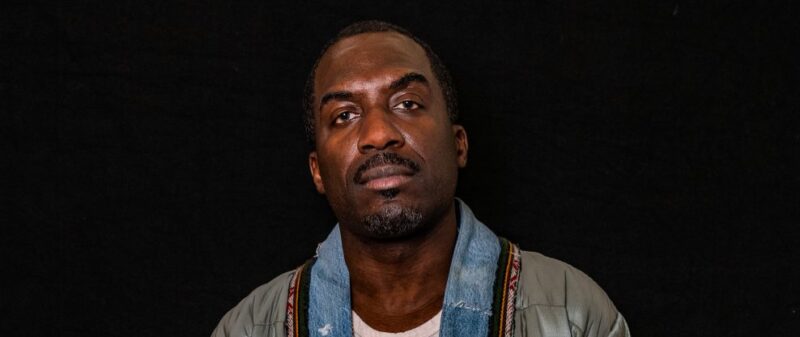
The Morning Mile is a daily column written by Culture Editor Ryan Shepard and published at 9 a.m. CT. The views of Ryan Shepard do not necessarily reflect those of Def Pen writers, editors and staff.
The greatest figures in the story of how Hip-Hop came to be what it is today are often the people that fly under the radar. There’s an A&R that has a story about hearing The LOX for the first time and having dinner with the Notorious B.I.G. However, most everyday fans would walk past this person on the street without batting an eye or doing a double-take. Corey Smyth is one of those types of people. He’s been everywhere, seen everything and has a story involving just about anyone you could think of. Smyth describes himself as the “Forest Gump” of his community, but he just may be the “Forest Gump” of Hip-Hop.
“My life is truly a blessing. I’m the Forest Gump of my friend group and my community. If you watch that movie, he’s always at the right place, at the right time. He seems like he’s been at every event we’ve ever had in history. That’s like me, right?” he explained
If Tom Hanks first appears as Forest Gump while sitting at a bus stop, then Smyth’s first scene probably begins on the campus of Morehouse College. The camera would hover over Smyth guiding a group of prospective college students as he discusses the benefits of the Atlanta University Center. Somewhere off in the corner, there’s a piercing image of a Confederate flag hanging from a construction site on the campus of a historically Black college in one of the Blackest cities in America. Then, it happens! Smyth springs into action, scaling the construction site and disposing of the Civil War-era symbol. To the movie viewer, it may feel like the start of a great origin story. To Smyth, it’s just something that happened. It’s another story in his long list of stories to tell.
“My impulse was that I had just seen it there. I didn’t have a connection to the Confederate flag. I’m a kid from New York City. There weren’t a bunch of Confederate flags flying around. However, something inside told me, “Oh hell, no.” So, I climbed to the top of the new dorm, which became Kilgore, and I pulled down the flag. I could have fallen and died for sure, but I was going to get that flag,” he said while partially shrugging his shoulders.
Thinking back on it, Smyth’s Forest Gump-like drama may not even start at that moment. It may start with a baseball card. During his college days, Smyth, like Hanks’ Forest Gump, found himself in a peculiar situation. Somehow, someway he became the owner of a classic Mickey Mantle baseball card that was valued somewhere between a few month’s rent in an upscale apartment complex and the type of luxury car you only see in a James Bond film. Knowing this information, Smyth wanted what every other young college student living in Atlanta would want, a new car. However, he got a bit of information from a trusted source that he’d be better off holding on to that classic baseball card.
“My impulse has always been my love of creativity, art and music. When you draw that parallel, the impulse back then was, “Hey I wanted a Jeep!” Then, my friend told me not to act on that impulse and I didn’t because it was my best friend telling me not to act on that impulse. Instead, he gave me this book and I was always the type of kid who would love to read. I’ve got books all over the house now actually,” he said as if he was staring back into time.
Whether the film starts in his hometown of New York, Morehouse College or the discovery of a classic Mickey Mantle baseball card, it only gets better from there. The aforementioned Mickey Mantle baseball card was not used to buy a jeep, but rather it was sold and used to start a management company. The funds were vital in terms of supporting one of his earliest acts, Y’all So Stupid. With that said, the engine that made his management company move with the tenacity of a classic jeep was his ability to be “at the right place, at the right time.”
During his early days of doing choreography and dancing, he met Dallas Austin, the legendary music mogul who has worked with everyone from TLC to Babyface. Ultimately, their friendship led to the strategic sale of his rare Mickey Mantle baseball card and the start of his management career.
There’s another scene in the film of his life when he threw a party in New York that was DJ’d by a young guy named Mark Ronson. Have you ever heard of him? In the midst of Ronson’s DJ set, Smyth came across another person who wanted to DJ at the party. His name was Maseo and the two quickly became friends. Over the course of a year or so, their friendship led to the business opportunity of a lifetime, managing De La Soul. From there, the rest truly does read and sound like a Forest Gump story. While managing De La Soul, he built a relationship Mos Def and Talib Kweli that led to him working with Black Star. Subsequently, he worked with Santi, now Santigold, who introduced him to Lil’ Jon and David Banner. And then there’s the part about him managing the talent on The Dave Chappelle Show. If this all sounds like a weird set of coincidences that sent him down a path that is fit for a movie screen, then that’s because it is. However, he’s not looking to be the next big movie star. Rather, he’s chosen to tell his story on his own show, Blacksmith Radio.
“I’m getting to the age where I kind of need to tell my story,” he explained.
“A long time ago, I had this idea called the ‘Black Smithsonian’ that I was going to use to tell these Forest Gump-like stories. One day during the pandemic, I got a call from Brian Eno of Sonos Radio and we were just catching up. They were about to start this HD program and I said, ‘Hey, you know I had this idea…’ My idea was kind of like the ‘Black Smithsonian,’ but I thought it could it be really run as a radio station. I could interview my friends, people I’ve been in contact with through the years, and create this station not only based on my taste in music, to the people that I worked with.”
Smyth isn’t done directing his biopic. Nearly 30 years have passed since he sold that classic Mickey Mantle baseball card, but he’s still an integral part of Vince Staple’s story and the success of Blacksmith Records. However, a few things have changed. He’s traveled the world, made a few lifelong friends and it’s probably safe to say he’s got enough money saved to finally buy that Jeep. Most importantly, he’s raising a few kids that can one day look back at the stories told on Blacksmith Radio and say, “My Dad lived a pretty full life.”
“If my kids listen to these stories one day, I want them to walk away knowing this: Trust your gut. If you love something and you can find a way to do that thing you love as a career, know that it is a blessing. I think that’s what we all strive for.”
“When I look at my daughters…I have a five-year-old who will be six this year and I have a two-year-old who just turned two in March. When they grow up, I want for them to be so moved by something that they’ll just do it for free if they had to.”
For Blacksmith Radio Episode 001, @common joins host Corey Smyth (@cblacksmith) to discuss his proud Chicago roots, looking back to where it all started, and the collaboration with De La Soul that kick-started his career.
Listen to the Blacksmith Radio station only on @Sonos ? pic.twitter.com/iZdCgaupyR
— BLACKSMITH RECORDINGS (@blacksmithnyc) March 1, 2021







